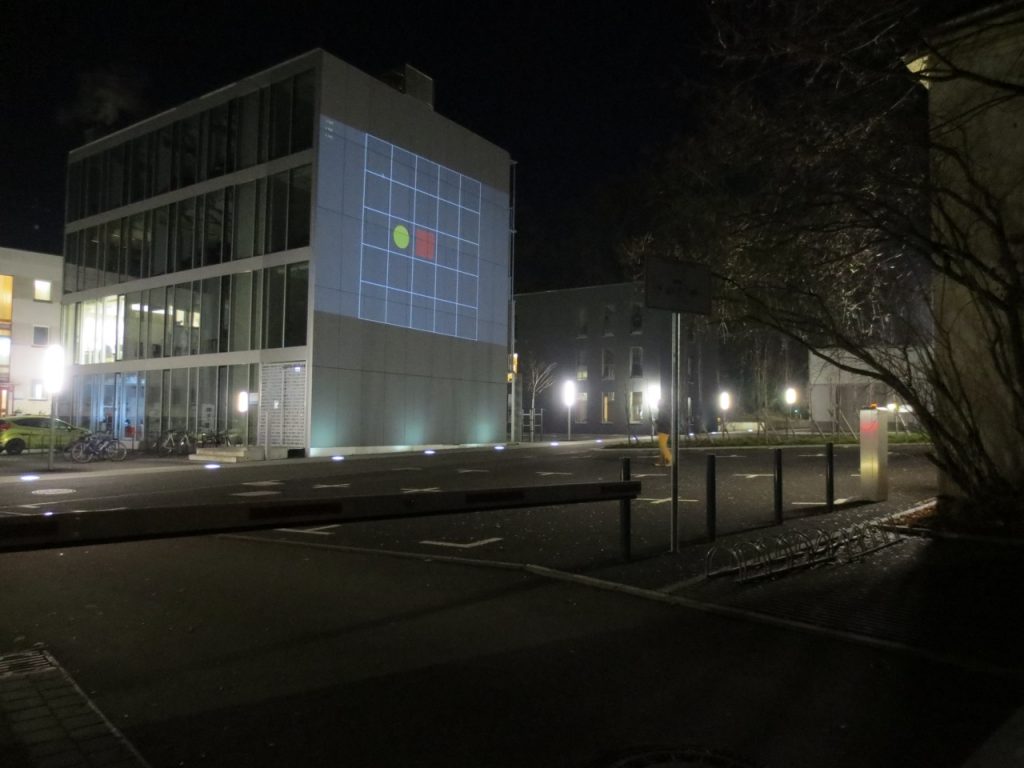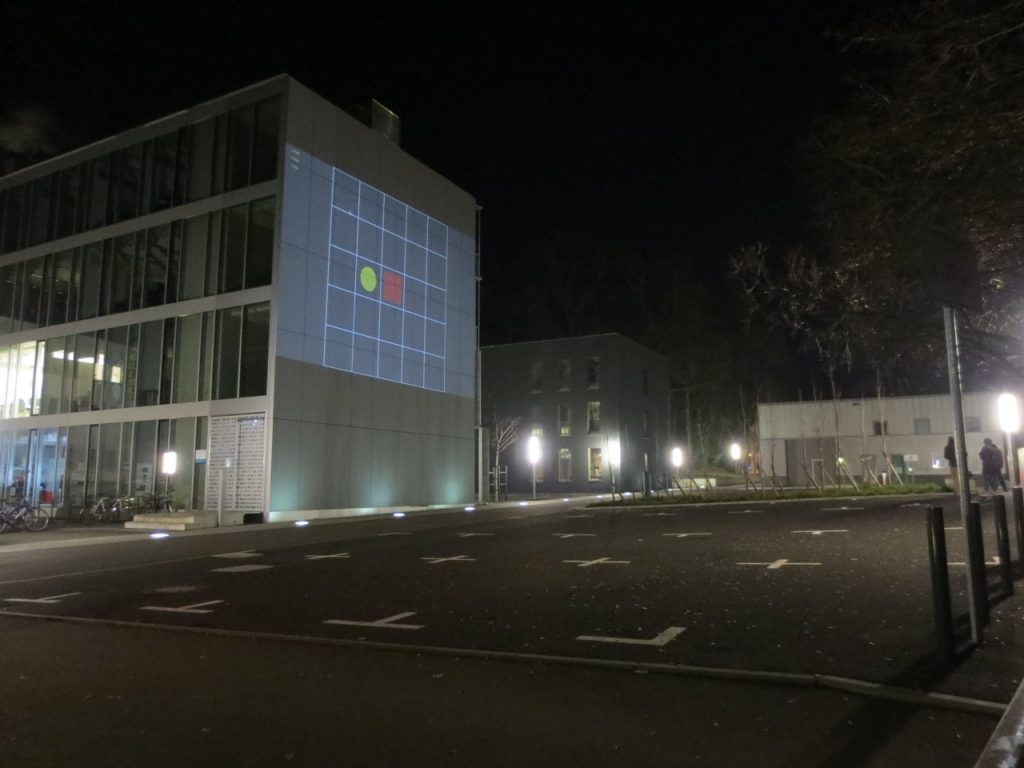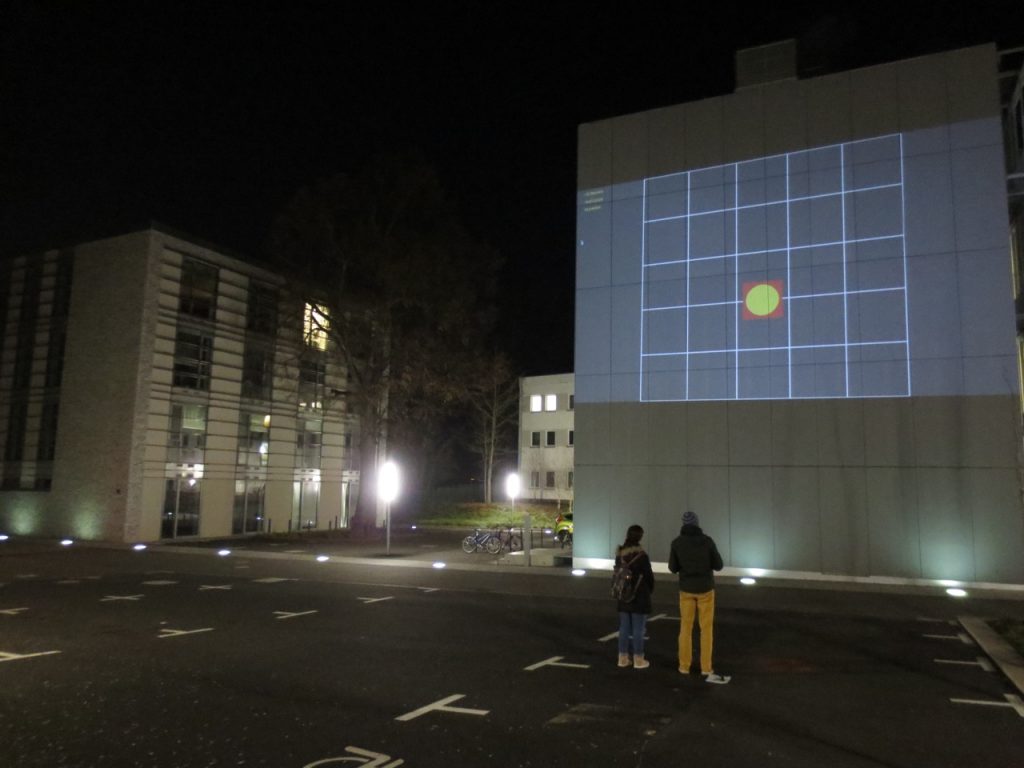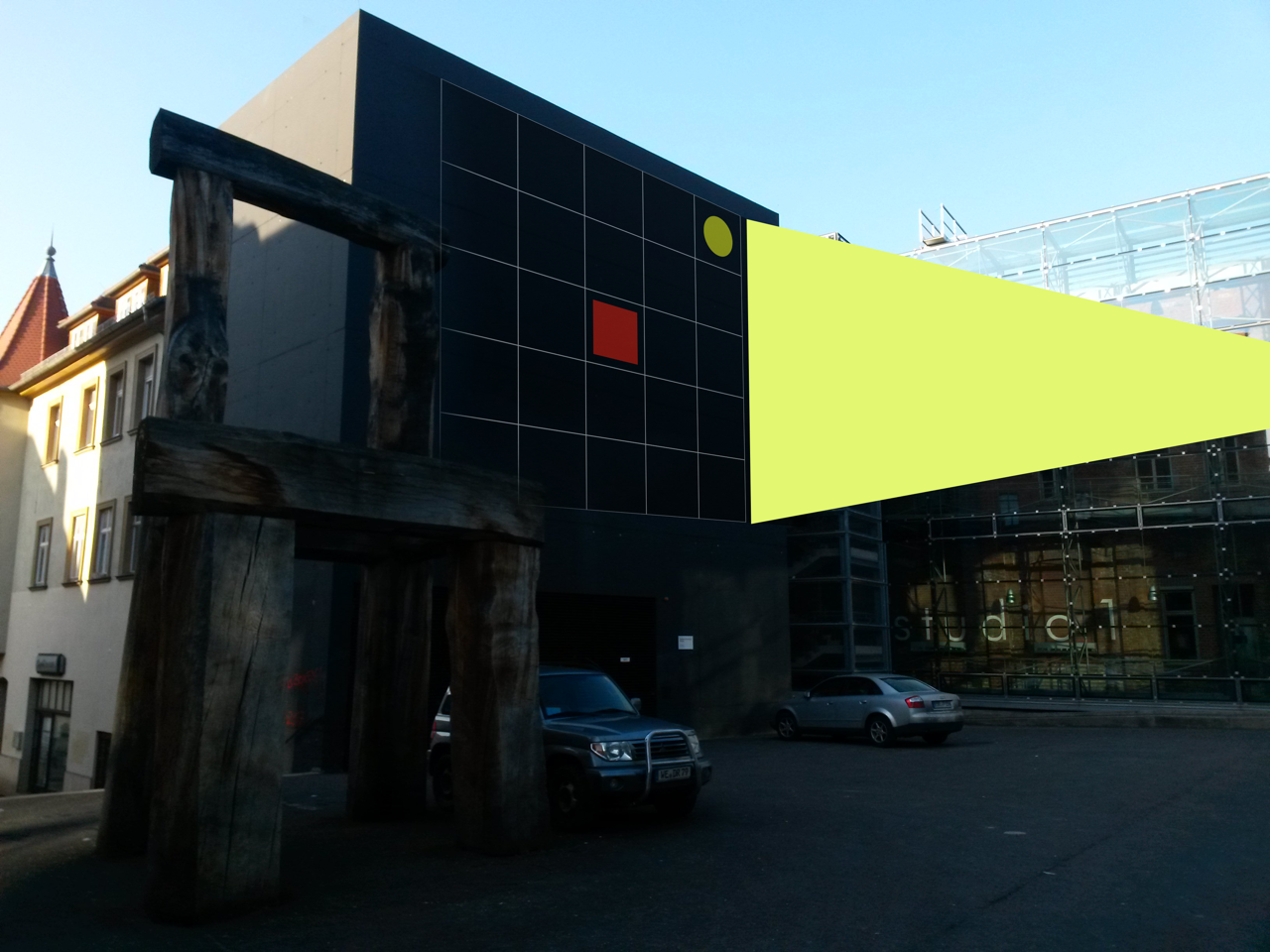Investigating Spatial Impact on User Experience (UX) of Interactive Media Façades
Artist: Ibni Amin, Computer Science & Media, Bauhaus-Universitaet Weimar
Introduction:
The purpose of this research is to investigate the influence of an environment on User Experience (UX) while using an Interactive Media Façade. A most distinguishable problem is to identify and evidence the effect of a position, distance while viewing the display on a large media façade by means of selection technique. To find out the effect of spatial position on UX quantitatively, the study design is based upon AttrakDiff questionnaire, which measure pragmatic, hedonic and overall attractiveness.
Study Design:
A Couple of user studies will take place in the courtyard next to the Digital Bauhaus Lab (DBL) of the Bauhaus Universität Weimar and in the Garden of Bauhaus-Ein (B1) respectively. A large image projection will be made on the big façade in an open environment. The Interaction space will lie in front of the interactive media façade. In contrast to other studies where the interaction is carried out from a singleton interaction space; this study divides spatially the Interaction space into 6 spatial positions e.g. Sampling Points, which are arranged in front of the façade such that a user perceives the projection-surface as a part of the 3D building. A goal oriented task will be displaying on the big façade, and a wearable armband gesture recognition device will potentially carry out the interaction with the Media Façade.
Participant Task:
The participants in the studies will use an interaction technique to allow them to select an object on a screen and move it somewhere. Each user is tested against 6 sampling points and their responses to the interaction and their perceived experiences will be noted using AttrakDiff questionnaire. This data will then be analyzed and then later interpreted based on techniques derived from similar studies within the field of qualitative analysis surrounding experience and interaction. From this a conclusion will be drawn from the participant’s data.




